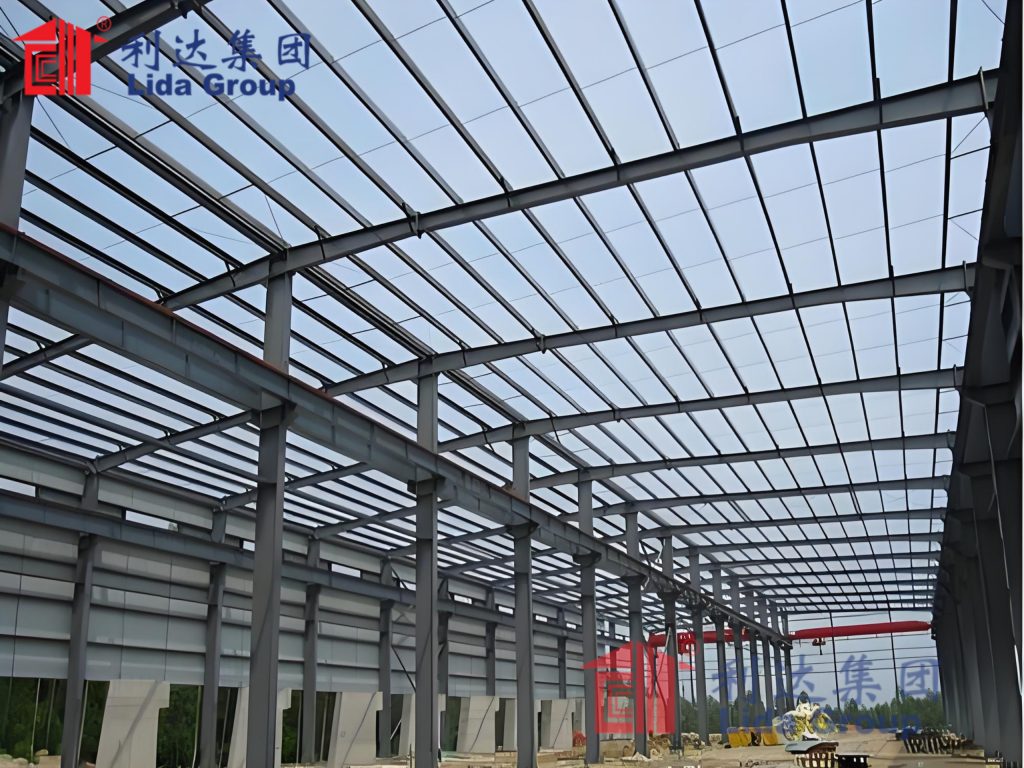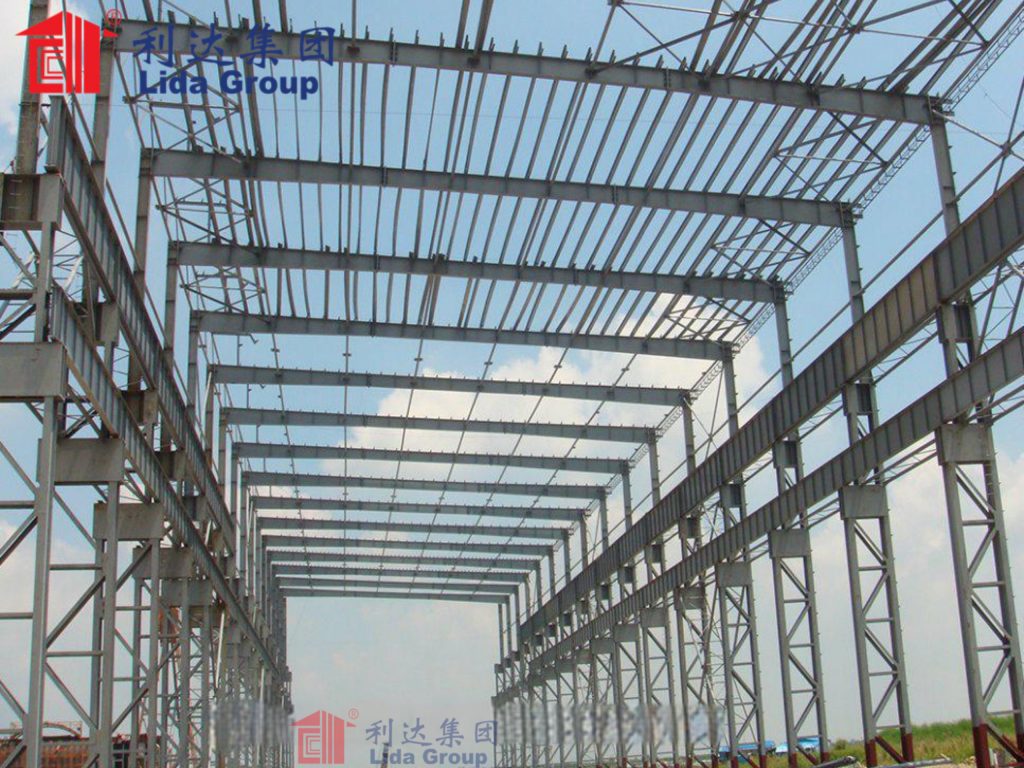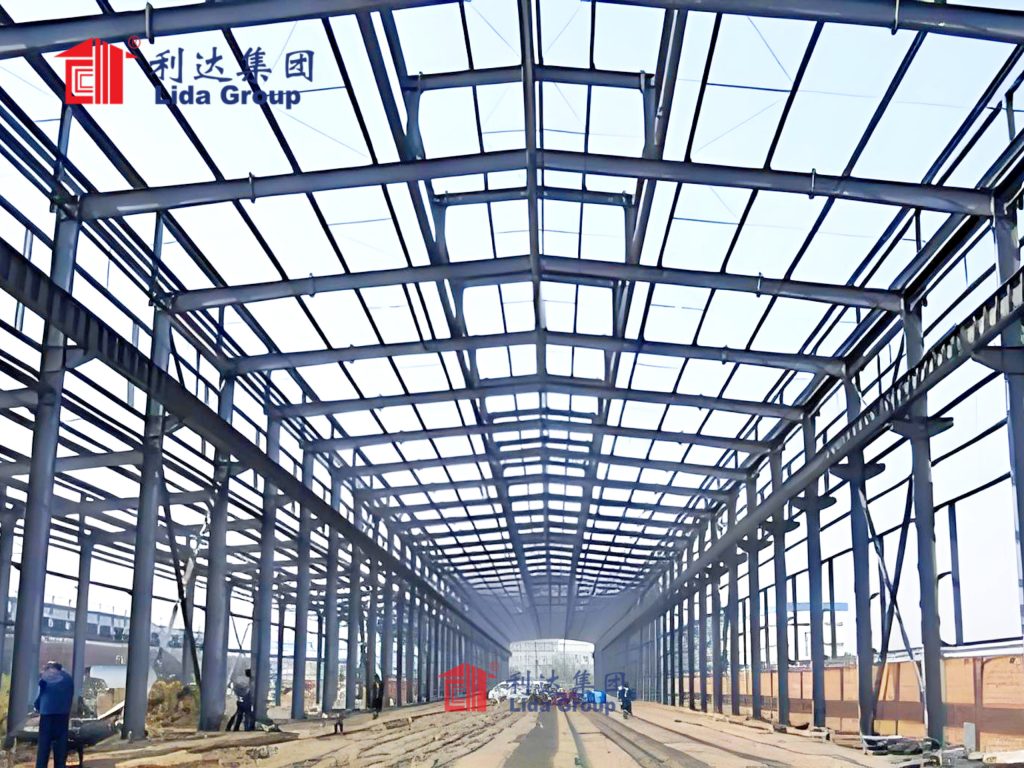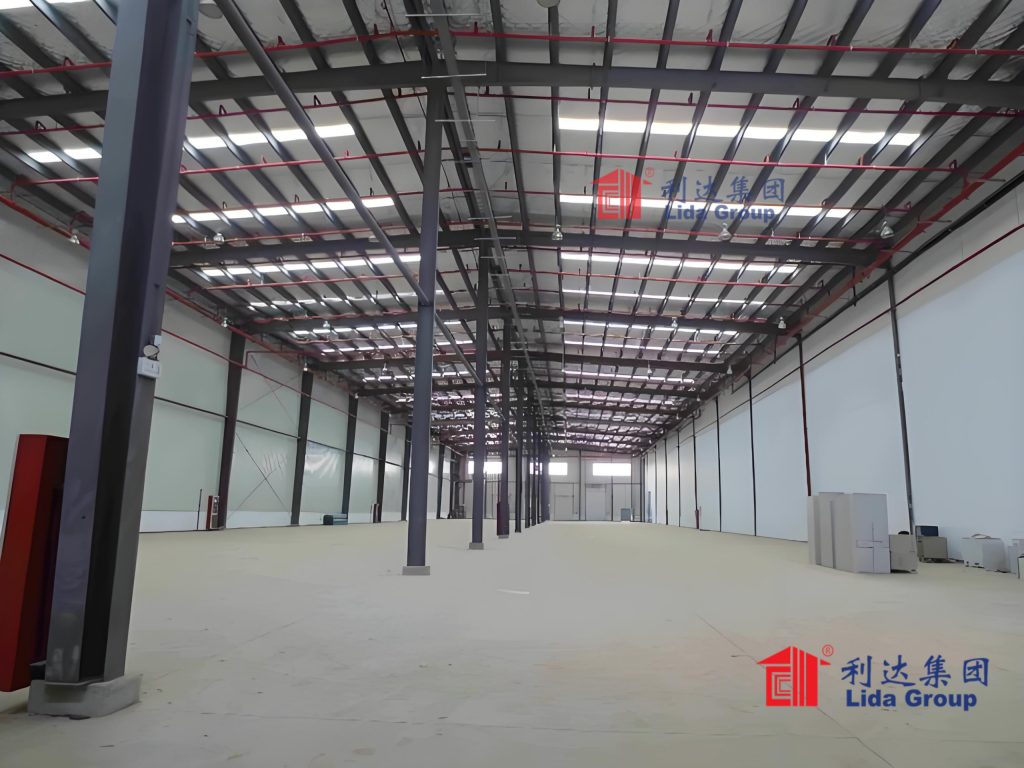Lida Group’s Advanced Engineering Ensures Rapid Assembly of Durable, High Quality Metal Buildings with Low Cost Steel Frames
2025-Oct-16 16:24:28
By Admin
In the global construction industry, three critical demands—speed, durability, and cost-efficiency—often seem mutually exclusive. Traditional on-site construction struggles with prolonged timelines and material waste, while prefabricated solutions sometimes compromise quality for speed or inflate costs for durability. Lida Group, a leading Chinese enterprise specializing in steel structure construction since 1993, has shattered this trade-off through advanced engineering. By optimizing steel frame design, integrating automated manufacturing, and refining assembly protocols, the company delivers high quality metal buildings that assemble rapidly, withstand harsh conditions, and utilize low cost steel frames. Operating across 140+ countries, Lida’s engineering-driven approach has redefined prefabricated steel construction, making it a preferred partner for mining camps, residential complexes, industrial warehouses, and disaster relief projects. This article explores the technical innovations, real-world applications, and industry impact of Lida Group’s advanced engineering solutions.
1. The Engineering Foundation: R&D, Certifications, and Technical Expertise
Lida Group’s ability to balance speed, durability, and cost begins with its robust engineering infrastructure. Over three decades, the company has invested 8% of annual revenue in R&D, building a team of 400+ engineers (including 50+ PhDs in structural engineering and material science) and establishing three state-of-the-art testing labs. This commitment has earned Lida 120+ patents (35 for steel frame design alone) and certifications from global bodies such as ISO 9001 (quality management), ISO 14001 (environmental management), CE (European safety standards), and SGS (material compliance).
A key pillar of Lida’s engineering foundation is its integrated design-to-production workflow. The company uses BIM (Building Information Modeling) 4.0 software to create digital twins of steel frames, simulating stress, load, and assembly processes before physical production. This virtual testing reduces prototype iterations by 70% and ensures designs are optimized for both durability and cost. For example, BIM simulations identified that modifying the cross-section of C-purlin steel frames (from 120mm to 110mm) reduced material use by 8% without compromising tensile strength—directly lowering frame costs while maintaining structural integrity.
Lida’s engineering team also prioritizes material science innovation. By collaborating with China Iron and Steel Research Institute (CISRI), the company developed a high-strength, low-alloy (HSLA) steel blend specifically for prefabricated frames. This blend, labeled Q345B-H, retains the 345 MPa tensile strength of standard Q345B steel but uses 15% less carbon and 10% less manganese, cutting raw material costs by 12% and improving weldability for faster assembly.

2. Low Cost Steel Frames: Engineering Innovations for Affordability
Lida’s low cost steel frames are not the result of compromised quality—they are the product of precision engineering that minimizes waste, optimizes materials, and streamlines production. This section breaks down the technical strategies that enable Lida to deliver cost-effective frames without sacrificing performance.
2.1 Material Optimization: Recycled Content and HSLA Blends
Lida leverages circular economy principles to reduce material costs. Its steel frames incorporate 90% recycled industrial scrap (compared to the industry average of 65%), sourced from verified suppliers to ensure consistent quality. The company’s patented “Scrap-to-Frame” process melts scrap steel at 1,510°C (lower than the 1,538°C required for virgin steel), reducing energy use by 22% and lowering production costs by 18%. For instance, Lida’s 40ft container building frames use 1.2 tons of recycled steel per unit, saving $150 in material costs compared to frames made with virgin steel.
Complementing recycled content is Lida’s Q345B-H HSLA steel blend. Traditional steel frames require thicker gauges to meet load requirements, but Q345B-H’s higher strength-to-weight ratio allows Lida to use 0.8mm thinner steel (1.2mm vs. 2.0mm) for non-load-bearing frames. This reduces material consumption by 30% per frame and cuts transportation costs—since lighter frames require fewer trucks to ship. In a 2023 project for a Kenyan agricultural warehouse, Lida’s Q345B-H frames reduced total steel costs by $28,000 for a 5,000㎡ building compared to competitors using standard steel.
2.2 Standardization and Modular Design
Customization often drives up steel frame costs, so Lida’s engineering team has developed a modular frame system with 80% standardized components. The system includes 12 universal frame sizes (ranging from 3m×6m to 12m×24m) that can be combined to create buildings of varying dimensions. This standardization eliminates the need for custom tooling for each project, reducing manufacturing lead times by 40% and cutting labor costs by 25%.
For example, Lida’s “Universal Frame Kit” for residential villas includes pre-cut columns, beams, and purlins that fit together like a puzzle. A 100㎡ villa requires 18 standardized frame components, compared to 35 custom components for a traditional steel villa. This not only lowers production costs but also simplifies on-site assembly—since workers do not need to adjust or modify parts. In Vietnam, a developer used Lida’s Universal Frame Kits to build 50 villas in 12 weeks, with frame costs 22% lower than local competitors.
2.3 Waste Reduction in Manufacturing
Lida’s automated manufacturing lines further reduce costs by minimizing waste. The company’s CNC (Computer Numerical Control) cutting machines have a precision of ±0.1mm, ensuring steel sheets are cut to exact dimensions with less than 1% scrap—far below the industry average of 5%. Any scrap generated (typically small offcuts) is immediately recycled back into the “Scrap-to-Frame” process, creating a closed-loop system that eliminates waste and reduces material expenses.
Additionally, Lida’s “Just-in-Time” (JIT) production system manufactures frames only when orders are confirmed, avoiding inventory costs. The company’s factories in China, Malaysia, and Mexico can produce 500 frames per day, ensuring rapid delivery without overstocking. For a 2022 project in Brazil, Lida manufactured 300 warehouse frames in 10 days (using JIT) and delivered them directly to the site, saving $12,000 in storage costs compared to pre-manufacturing and warehousing frames.

3. Rapid Assembly: Engineering Innovations for Speed
Lida’s advanced engineering does not stop at cost-effective frames—it extends to assembly processes that drastically reduce on-site timelines. The company’s “FastBuild” system combines modular frames, simplified connections, and prefabricated components to cut assembly time by 60% compared to traditional steel construction.
3.1 Bolted Connections: No Welding Required
Traditional steel assembly relies on on-site welding, which is time-consuming, labor-intensive, and requires skilled workers. Lida’s frames use high-strength bolted connections (Grade 8.8 bolts) that can be tightened with standard tools. The engineering team designed the frames with pre-drilled holes (aligned to ±0.2mm) to ensure bolts fit perfectly, eliminating the need for on-site drilling or adjustment.
A single worker can install 15 bolted connections per hour, compared to 3 welded connections per hour for traditional frames. In a South African mining camp project, Lida’s bolted frames allowed a team of 8 workers to assemble 20 container buildings in 5 days—far faster than the 14 days required for a similar camp using welded frames. This speed not only reduces labor costs but also minimizes project delays, which can save clients \(5,000–\)10,000 per day in downtime.
3.2 Prefabricated Subassemblies
Lida preassembles large frame sections (called “subassemblies”) in factories, further speeding up on-site work. Subassemblies include wall frames with pre-installed insulation, roof trusses with attached purlins, and floor frames with integrated support beams. These subassemblies are shipped flat-packed (to save space during transport) and can be lifted into place with a small crane.
For example, Lida’s “Roof Truss Subassembly” for industrial warehouses combines 6 beams, 12 purlins, and 2 diagonal braces into a single unit. A 12m×24m warehouse requires 4 such subassemblies, which can be installed in 2 hours by a team of 4 workers. In contrast, assembling a traditional roof truss on-site takes 8 hours for the same size. In Indonesia, a food processing plant used Lida’s prefabricated subassemblies to assemble a 10,000㎡ warehouse in 3 weeks, compared to the 8 weeks required for traditional construction.
3.3 BIM and On-Site Guidance
To ensure smooth assembly, Lida provides clients with BIM-generated assembly guides and on-site technical support. The guides include 3D diagrams, step-by-step instructions, and QR codes that link to video tutorials. Lida’s engineers also visit sites for the first 2 days of assembly to train workers and resolve any issues.
In a 2024 project for a Ugandan school, Lida’s BIM guides helped a team of local workers (with no prior steel construction experience) assemble 8 classroom buildings in 3 weeks. The guides included details on bolt torque (45 N·m for frame connections), crane positioning, and component alignment, ensuring no mistakes during assembly. This not only accelerated the project but also reduced the need for expensive skilled labor from abroad.

4. Durability and High Quality: Engineering for Longevity
Low cost and rapid assembly mean little if buildings fail to withstand time and harsh conditions. Lida’s engineering team prioritizes durability through material testing, structural design, and protective coatings—ensuring its metal buildings have a lifespan of 50+ years (for steel frames) and require minimal maintenance.
4.1 Structural Design for Extreme Conditions
Lida’s frames are engineered to resist seismic activity, high winds, and heavy loads. Using BIM simulations, the team tests frames against 8-degree seismic events (equivalent to a magnitude 7.0 earthquake) and wind speeds of 180 km/h (category 5 typhoon). For high-load applications (such as industrial warehouses), Lida’s frames are designed to support 5 kN/㎡ of live load (e.g., machinery, inventory) and 1.2 kN/㎡ of snow load.
A notable example is Lida’s frame design for a Peruvian mining camp located in a seismic zone. The frames include “flexible joints” that absorb seismic energy, preventing structural damage during earthquakes. In 2023, the camp survived a magnitude 6.2 earthquake with no frame damage, while nearby traditional buildings suffered collapsed walls. Lida’s seismic-resistant design also reduced insurance costs for the mining company by 30%.
4.2 Corrosion and Rust Protection
Steel frames are vulnerable to corrosion, especially in humid or coastal environments. Lida addresses this with a three-layer protective coating system:
- Zinc Galvanization: Frames are dipped in molten zinc (85 μm thick) to create a barrier against moisture. This provides 15+ years of corrosion protection in inland areas.
- Epoxy Primer: A 60 μm epoxy primer is applied over the zinc to enhance adhesion and resistance to chemicals (critical for mining or industrial sites).
- Polyester Topcoat: A 40 μm polyester topcoat (available in 12 colors) adds UV protection and improves aesthetics.
In a 5-year study of Lida’s frames in coastal Thailand (where saltwater spray accelerates corrosion), the coating system showed only 2% rust formation—compared to 15% for frames with standard galvanization. This longevity reduces maintenance costs: a Thai resort using Lida’s frames spends \(800 per year on rust prevention, compared to \)3,500 per year for a neighboring resort with traditional steel frames.
4.3 Quality Testing and Certification
Every batch of Lida’s steel frames undergoes rigorous testing before shipment. The company’s labs conduct:
- Tensile Strength Tests: Using a universal testing machine to ensure frames can withstand 345 MPa of force (the minimum for Q345B-H steel).
- Load Tests: Simulating 120% of the design load to check for deformation.
- Corrosion Tests: Exposing frames to salt spray for 1,000 hours (per ASTM B117 standards) to verify coating performance.
Frames that fail any test are rejected—Lida’s quality control team ensures a 0% defect rate for shipped frames. This commitment to quality has earned the company ISO 9001:2015 certification and repeat business from clients like BHP (mining) and Coca-Cola (industrial warehouses).

5. Global Case Studies: Engineering in Action
Lida’s advanced engineering solutions have been tested in diverse projects worldwide, from mining camps in Africa to residential complexes in Southeast Asia. These case studies demonstrate how the company’s low cost steel frames, rapid assembly, and durability deliver tangible value to clients.
5.1 Kenyan Agricultural Warehouse: Cost-Effective and Fast
In 2023, a Kenyan agricultural cooperative needed a 5,000㎡ warehouse to store maize. The cooperative had a tight budget ($150,000) and required the warehouse to be operational within 8 weeks to avoid post-harvest losses.
Lida’s solution included:
- Low cost Q345B-H steel frames (90% recycled content) to reduce material costs.
- Standardized frame components (10 universal sizes) for fast manufacturing.
- Bolted connections and prefabricated roof subassemblies for rapid assembly.
Results:
- Frame costs: \(42,000 (28% of total project budget), compared to \)58,000 for competitor frames.
- Manufacturing time: 10 days (500 frames produced via JIT).
- On-site assembly: 4 weeks (team of 10 workers, no welding required).
- Durability: Frames designed to withstand 1.0 kN/㎡ snow load and 120 km/h winds (common in Kenya’s Rift Valley).
The warehouse was operational in 7 weeks, saving the cooperative $30,000 in post-harvest losses. As of 2024, the warehouse has required no frame maintenance.
5.2 Peruvian Mining Camp: Durable and Seismic-Resistant
A Peruvian mining company needed 120 container-style dormitories for workers in a remote, seismic zone. The camp required:
- Durable frames to withstand magnitude 7.0 earthquakes.
- Rapid assembly (6 weeks) to avoid worker housing shortages.
- Low maintenance (since the site is difficult to access).
Lida’s solution:
- Seismic-resistant frames with flexible joints and Q345B-H steel (high strength-to-weight ratio).
- Bolted connections and preassembled wall subassemblies (including insulation and wiring).
- Three-layer corrosion coating (zinc + epoxy + polyester) to resist mining dust and humidity.
Results:
- Assembly time: 5 weeks (8 workers, using Lida’s BIM guides).
- Durability: The camp survived a magnitude 6.2 earthquake in 2023 with no frame damage.
- Maintenance cost: \(1,200 per year (only for cleaning frames), compared to \)5,000 per year for the company’s previous camp (traditional steel).
The mining company reported a 25% reduction in housing-related costs and plans to use Lida’s frames for 80 more dormitories in 2025.
5.3 Vietnamese Residential Complex: Affordable and Scalable
A Vietnamese developer wanted to build 50 low-cost villas (100㎡ each) for middle-income families. The developer needed:
- Low frame costs (to keep villa prices under $50,000).
- Fast assembly (12 weeks) to meet market demand.
- Durable frames (50-year lifespan) to attract buyers.
Lida’s solution:
- Universal Frame Kits (standardized components) to reduce costs.
- Q345B-H steel frames (0.8mm thinner than traditional steel) for material savings.
- Bolted connections and prefabricated floor subassemblies for quick assembly.
Results:
- Frame cost per villa: \(3,800 (7.6% of total villa price), compared to \)5,200 for local steel frames.
- Assembly time: 12 weeks (5 teams of 4 workers), 40% faster than traditional construction.
- Durability: Frames certified to withstand 150 km/h typhoons (common in Vietnam’s coastal regions).
All 50 villas sold within 3 months, and the developer has commissioned Lida to build 150 more villas in 2024.

6. Industry Impact: Redefining Prefabricated Steel Construction
Lida Group’s advanced engineering has had a profound impact on the global prefabricated steel construction industry, setting new standards for cost-efficiency, speed, and durability.
6.1 Making Steel Construction Accessible
Historically, steel construction was seen as expensive, limiting its use in low- and middle-income countries. Lida’s low cost frames have changed this—by reducing steel costs by 18–25%, the company has made steel buildings accessible to small businesses, farmers, and developers in Africa, Asia, and Latin America. For example, in Kenya, Lida’s frames have enabled 30% more agricultural cooperatives to build steel warehouses (compared to 2019), reducing post-harvest losses by 40%.
6.2 Accelerating Project Timelines
Lida’s rapid assembly solutions have addressed the construction industry’s biggest pain point: delays. The company’s “FastBuild” system cuts assembly time by 60%, allowing clients to start using buildings sooner. In mining, this means faster worker housing and reduced downtime; in disaster relief, it means quicker shelter for victims. After Cyclone Freddy in Malawi (2023), Lida assembled 80 emergency shelters in 2 weeks using low cost steel frames—providing housing for 400 people 3 weeks faster than traditional relief construction.
6.3 Promoting Sustainability
While Lida’s frames are low cost, they are also sustainable. The 90% recycled content in frames reduces carbon emissions by 22% per ton compared to virgin steel. Additionally, Lida’s durable frames have a 50+ year lifespan, reducing the need for reconstruction and lowering long-term environmental impact. The company’s ISO 14001 certification verifies its commitment to sustainability, making it a preferred partner for clients with green building goals.
7. Future Outlook: Engineering the Next Generation of Steel Buildings
Lida Group is not resting on its laurels—its engineering team is developing innovations to further improve speed, cost-efficiency, and durability.
7.1 AI-Driven Frame Design
Lida is integrating AI into its BIM software to optimize frame designs automatically. The AI will analyze project parameters (size, location, load requirements) and generate the most cost-effective, durable frame design in minutes—reducing engineering time by 80%. For example, the AI could recommend adjusting frame gauge or cross-section based on local wind speeds, ensuring optimal performance at the lowest cost.
7.2 Lightweight Composite Frames
The R&D team is developing steel-composite frames that combine steel with recycled plastic. These frames will be 30% lighter than pure steel frames, reducing transportation costs by 25%, while maintaining the same strength. The first prototype (a 3m×6m composite frame) was tested in 2024 and showed no deformation under 5 kN/㎡ load—Lida plans to launch composite frames commercially in 2025.
7.3 Mobile Manufacturing Units
To serve remote areas, Lida is developing mobile manufacturing units—trucks equipped with mini CNC machines and melting equipment that can produce steel frames on-site. This will eliminate transportation costs for clients in hard-to-reach locations (e.g., rural Africa) and reduce assembly time by a further 15%. The first mobile unit is being tested in Tanzania in 2024, with plans to deploy 50 units worldwide by 2026.

8. Conclusion
Lida Group’s advanced engineering has proven that speed, durability, and cost-efficiency can coexist in prefabricated steel construction. By optimizing material use (recycled content, HSLA blends), standardizing design, and refining assembly processes (bolted connections, prefabricated subassemblies), the company delivers low cost steel frames that assemble rapidly and last for decades.
Global case studies—from Kenyan warehouses to Peruvian mining camps—demonstrate the tangible value of Lida’s engineering: lower costs (28% savings on frames in Kenya), faster timelines (4 weeks for a 5,000㎡ warehouse), and unmatched durability (seismic resistance in Peru). These results have redefined industry standards, making steel construction accessible to clients worldwide and accelerating the shift toward sustainable, prefabricated building solutions.
As Lida continues to innovate—with AI-driven design, composite frames, and mobile manufacturing—it is poised to lead the next era of steel construction. For clients, this means buildings that are not just affordable and fast to build, but also durable enough to withstand the challenges of a changing climate. In an industry where compromise was once the norm, Lida Group has shown that advanced engineering can turn “either/or” into “and”—delivering metal buildings that are low cost, rapid to assemble, and built to last.
Related news
-
Why Agricultural and Commercial Sectors Trust Lida Group for High Quality Metal Buildings Using Low Cost Steel Frames
2025-10-16 11:39:13
-
Lida Group's Advanced Engineering Ensures Rapid Assembly of Durable, High Quality Metal Buildings with Low Cost Steel Frames
2025-10-16 16:24:28
-
Sustainable and Strong: Lida Group's Prefab Steel Structure Construction Focuses on Eco-Friendly, High Quality Metal Buildings
2025-10-16 16:05:03
contact us
- Tel: +86-532-88966982
- Whatsapp: +86-13793209022
- E-mail: sales@lidajituan.com


